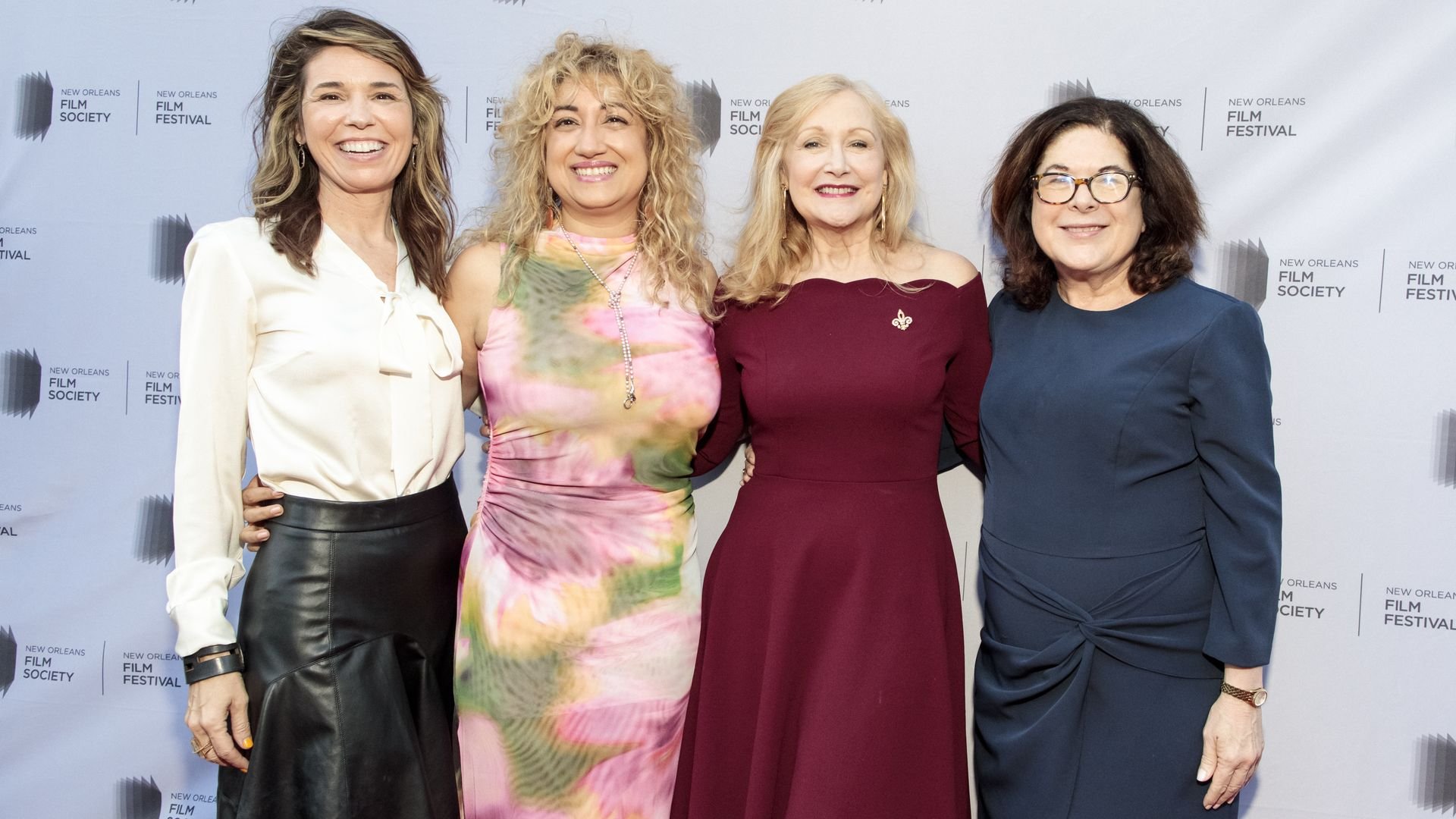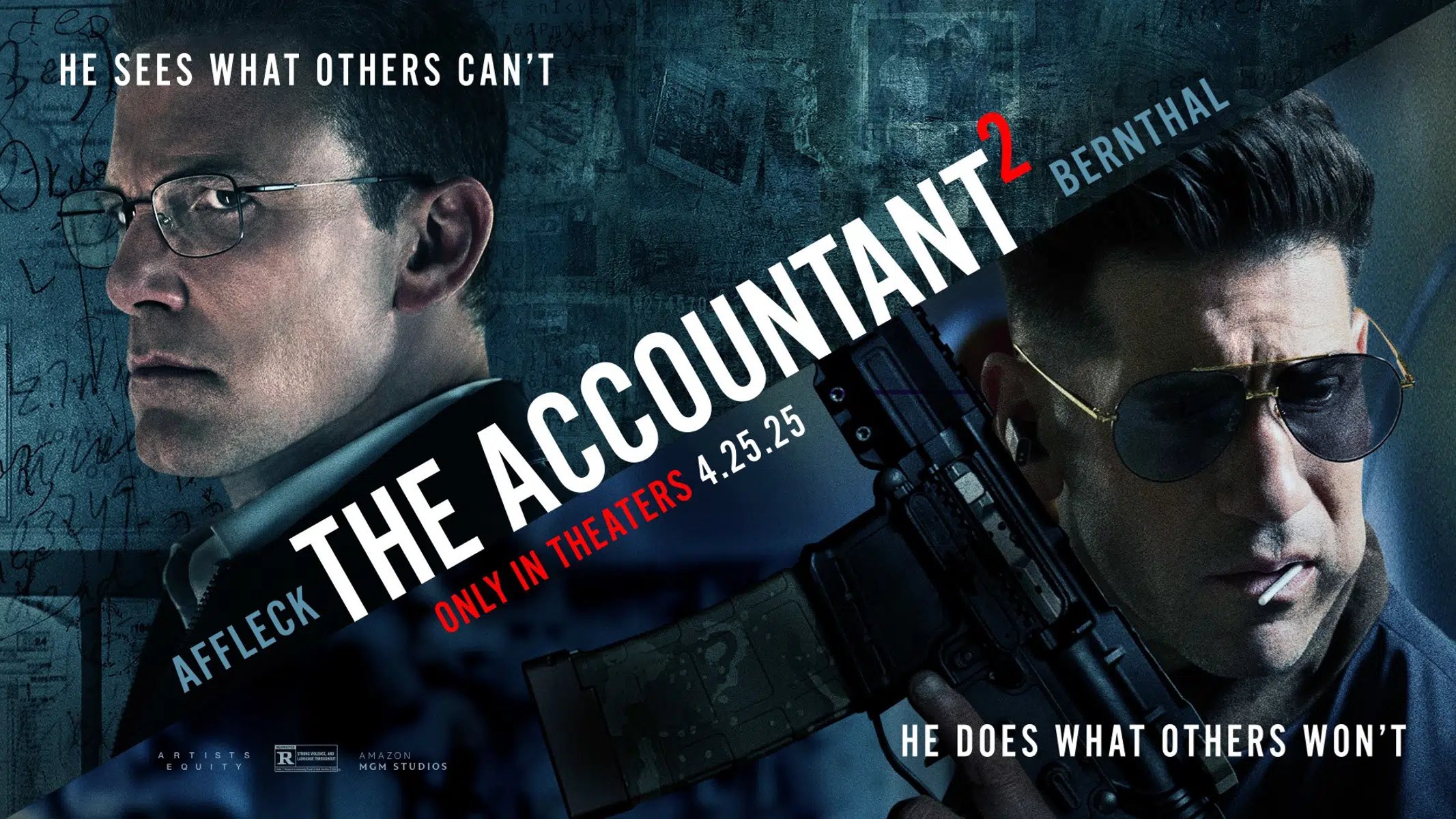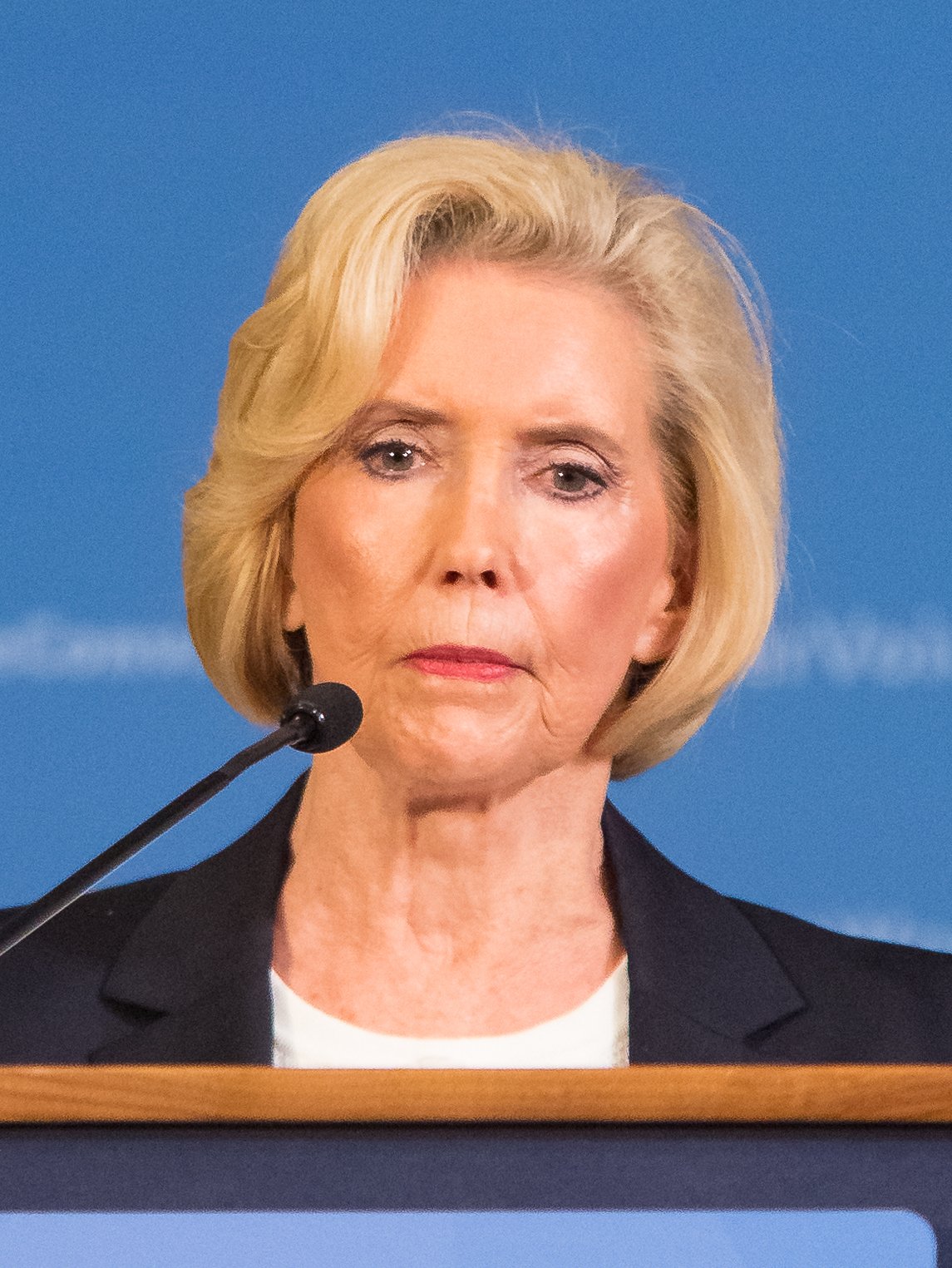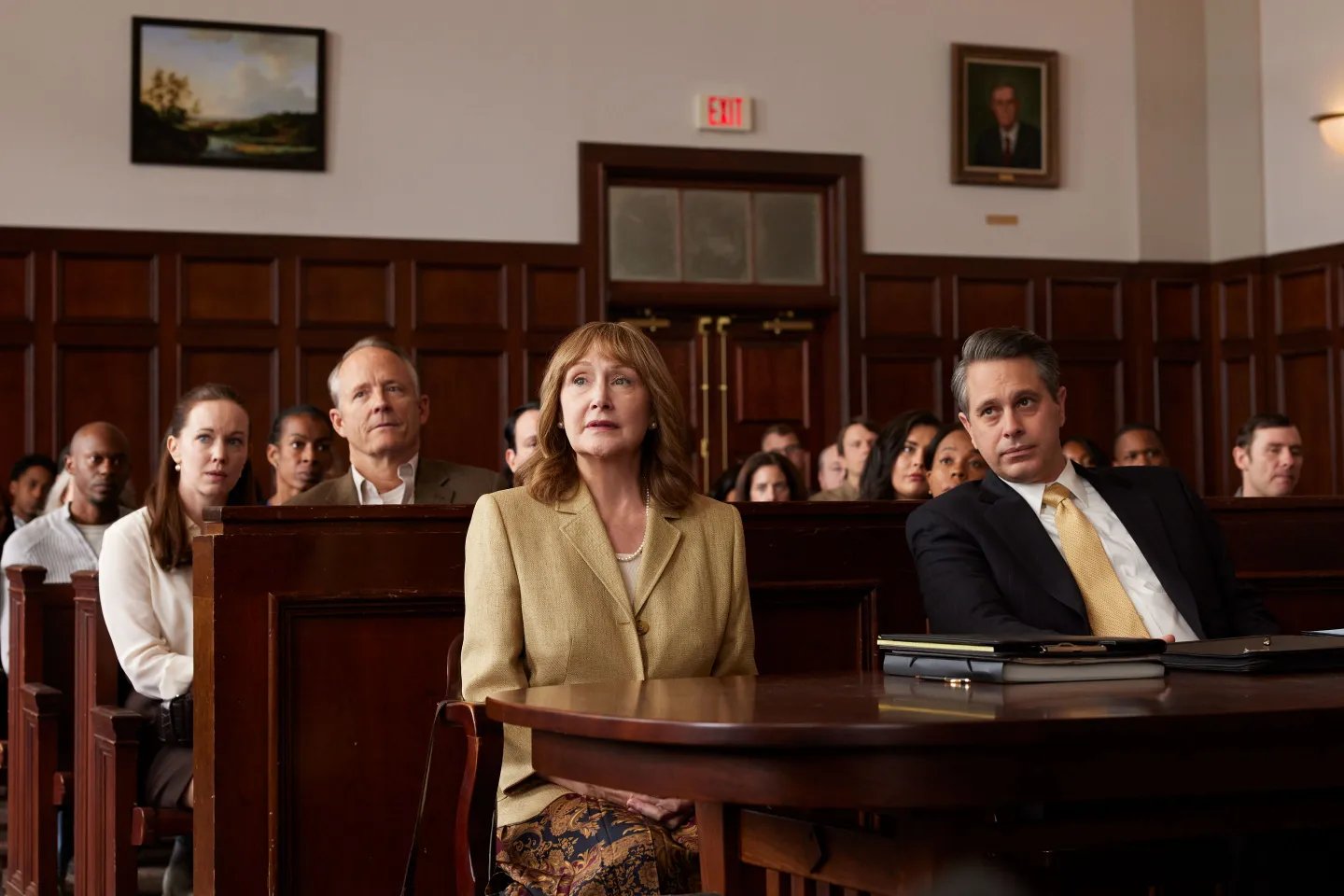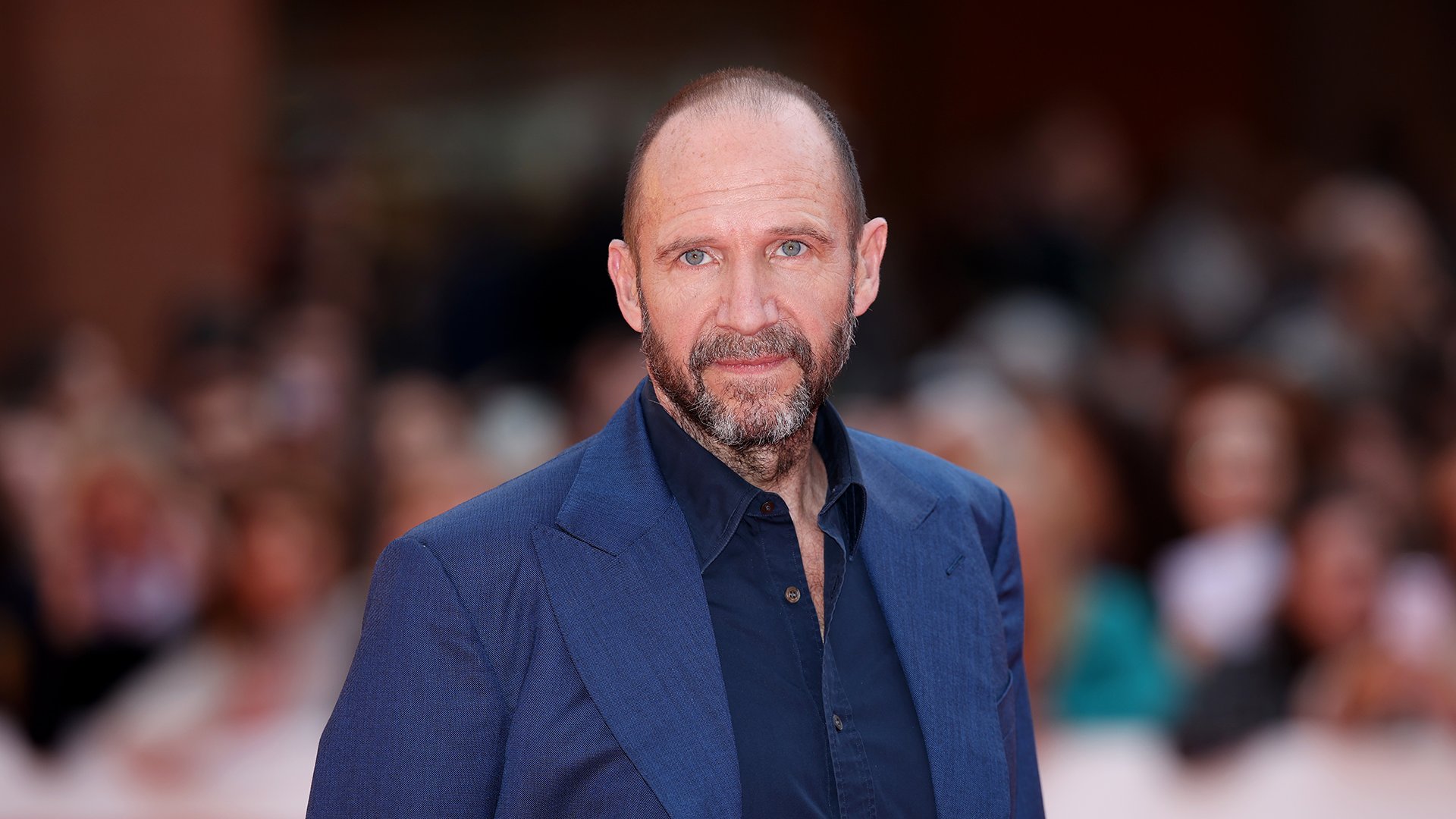Lilly is the much-anticipated biopic set to release on May 9, 2025, starring Patricia Clarkson as Lilly Ledbetter, the woman behind one of the most famous equal pay cases in American history. Directed by Rachel Feldman, the film explores both the public and private journey of Ledbetter, whose fight for justice changed U.S. law and inspired generations. Below, we reveal the first detailed look at this summer’s must-see drama and delve into the elements that set it apart.
First Look at Patricia Clarkson as Lilly Ledbetter
Newly released images capture Patricia Clarkson as Lilly Ledbetter, sitting in a car in a glitzy dress, her eyes filled with emotion as she looks up at someone outside the frame. This visual sets an intimate tone, hinting at a film that will explore key moments in Lilly’s life beyond the courtroom. Clarkson’s transformation into Ledbetter is striking, making her a focal point for the film’s promotional campaign and an early favorite for awards attention.
The image suggests a scene after a ballroom competition, a recurring motif in the movie that anchors Lilly as someone with a full life outside of her advocacy. This design choice humanizes the powerhouse activist, giving audiences a person they can relate to before she becomes a national figure. The visual storytelling aims to connect viewers emotionally to her journey.
Clarkson’s poised yet vulnerable look in the image invites the audience to discover the story of a small-town woman whose determination led her to the Supreme Court. Every detail, from the shimmer on her dress to the reflection in her eyes, promises a film rooted in real emotional stakes.
The release of this image marks the start of Lilly‘s marketing push, building anticipation for the official premiere and shaping expectations for a heartfelt, character-driven drama. Movie fans can expect more exclusive content in the run-up to the global release.
Lilly Movie Story and Real-Life Inspiration
Lilly is inspired by the real-life story of Lilly Ledbetter, a woman who took on Goodyear after years of pay discrimination and whose landmark legal fight led to the creation of the Lilly Ledbetter Fair Pay Act. The movie spans decades, highlighting her early days at the tire factory through her history-making Supreme Court case. This narrative arc demonstrates the slow, incremental process behind major social change.
Ledbetter’s fight began when she discovered she had been paid significantly less than her male coworkers for years. Her resilience and refusal to settle quietly became a symbol of the equal pay movement, igniting discussions that reached every corner of the United States and eventually inspired legislation signed by President Obama in 2009.
The film uses her story not only as a legal tale but also as an entry into the personal sacrifices and persistence required for such battles. It focuses on the working-class landscape of the South, the emotional toll on Ledbetter’s family, and the supportive community that surrounded her at the hardest moments.
- The story has particular resonance in today’s climate, echoing continued calls for pay equity and fairness in the workplace.
- The script blends moments from Ledbetter’s testimony, interviews, and published materials for accuracy, offering a multilayered look at her legacy.
Focusing on Lilly Ledbetter’s Personal Life and Marriage
The director, Rachel Feldman, has stated that her vision for Lilly centers on the real, everyday experiences that shaped Ledbetter’s courage. A major focus is the authentic romance between Lilly and her husband Charles, portrayed by John Benjamin Hickey. Their marriage, marked by steadfast support and genuine affection, is depicted as a deep bond sustaining Lilly through her toughest legal and personal battles.
The chemistry between Patricia Clarkson and John Benjamin Hickey is a driving force in the movie. The two actors, who have known each other for decades but never worked together before, bring a natural warmth and humanity to their scenes. Their relationship becomes the emotional anchor for the audience, reinforcing that every fight for justice is also a personal story.
Scenes show the couple engaging in simple joys, like dancing and attending social events, which balance the film’s heavier legal drama. These moments highlight how Lilly’s struggle for fairness began with a desire to provide for her family and protect their way of life. Feldman’s script deliberately avoids turning Ledbetter into a one-dimensional hero by fleshing out her vulnerabilities and hopes.
By focusing on home life and partnership, the movie reminds viewers that social change often starts in small, invisible acts of support and love. For many, this approach makes Lilly’s story both inspiring and accessible.
Patricia Clarkson’s Performance and Career Highlights
Patricia Clarkson is at the center of Lilly, bringing to life the grace, resolve, and dignity that defined Ledbetter. With a career spanning nearly four decades, Clarkson is known for her versatile roles and has received multiple major awards, including an Oscar nomination for Pieces of April and three Emmy wins for her television work.
In Lilly, Clarkson delivers a layered performance, using small gestures and subtle expressions to build the character from a hopeful factory worker to a national spokesperson for equal pay. Her ability to move fluidly between vulnerability and tenacity grounds the film’s tone. Given her reputation for elevating dramatic material, Clarkson’s involvement is a key draw for many audiences.
The movie benefits from Clarkson’s rapport with her co-stars, especially John Benjamin Hickey. Critics and early viewers have praised her performance as a career highlight, citing her ability to make even procedural scenes engaging by hinting at her inner emotional currents.
This role could place Clarkson in the conversation for upcoming awards season, especially as the campaign emphasizes her portrayal of an everyday hero who achieved something extraordinary.
Director Rachel Feldman’s Vision and Creative Team
Rachel Feldman directs and co-writes Lilly alongside Adam Prince, shaping a film that goes beyond the usual bounds of legal dramas. Feldman focused not just on courtroom fireworks but on creating a portrait of a woman shaped by her community, marriage, and working-class roots.
Rachel Feldman’s previous work in television and film is known for tackling urgent social issues and character-heavy drama. For Lilly, her goal was to balance the larger story of equal pay with personal, relatable moments. Interviews reveal her commitment to historical accuracy alongside emotional depth.
Feldman brought together a team that includes seasoned professionals from Hollywood and new voices. This mix is visible in both the emotional honesty on screen and the attention given to costumes and set design, which recreate Ledbetter’s Alabama with care.
The director’s vision is apparent in every frame, designed to create empathy rather than just admiration. Feldman credits her cast, particularly Clarkson and Hickey, for bringing a level of chemistry and realism that grounds the film.
Key Supporting Cast and Their Roles
The supporting cast of Lilly is anchored by John Benjamin Hickey as Charles Ledbetter, whose quiet strength provides an essential counterpoint to Clarkson’s performance. Other principal actors include Josh McDermitt, Thomas Sadoski, and Deirdre Lovejoy as figures pivotal in Lilly’s legal fight and personal life.
Josh McDermitt and Thomas Sadoski play colleagues and allies who chart the changing attitudes inside the factory and law offices. Their characters illustrate both the resistance and support that Lilly encountered over the years. Deirdre Lovejoy plays Jocelyn Samuels, based on a real-life legal adviser who guided Ledbetter through the maze of federal law.
Each actor brings dimension to the story, ensuring the movie does not rely simply on one central figure, but shows the web of connections that made Ledbetter’s victory possible. The deliberate casting underlines the inclusive message of the film.
The ensemble’s performances lend depth to scenes depicting labor relations, legal complexities, and everyday life in a Southern town. These roles help build an impression of a broad cultural movement, not just an individual fight.
Also Read
The Accountant 2 Surpasses Ben Affleck’s Early Films at the Global Box Office
Depicting the Groundbreaking Supreme Court Case
The heart of Lilly is the recreation of Ledbetter’s legal battle, culminating in her historic Supreme Court case. The movie devotes significant screen time to breaking down the difficult legal proceedings and the pivotal moments that led to the bitter final verdict. This detailed attention offers viewers a window into the often-misunderstood mechanics of American labor law.
The filmmakers use actual transcripts and court reporting to accurately channel Ledbetter’s testimony. These scenes are shot with a documentary feel, emphasizing the stakes for not just Lilly but millions of American workers. The movie’s depiction of the Supreme Court elevates the drama, with careful focus on the interplay between lawyers, judges, and Ledbetter herself.
Viewers see how Ledbetter’s courage grows as she confronts difficult questions, hostile cross-examinations, and the fearsome setting of the nation’s highest court. The scale of the legal case is made clear, but the film doesn’t lose sight of the human cost, particularly as decisions ripple through Lilly’s family and community.
Ultimately, the Supreme Court’s decision against Ledbetter is shown not as an end, but as the ignition for real legal reform. The movie closes this section by reflecting on the significance of the Lilly Ledbetter Fair Pay Act and how her loss in court laid the groundwork for legislative victory.
Also Read
Dacre Montgomery Sets Sights on The Engagement Party With Major Star Power
Lilly’s Influence Beyond the Courtroom
The movie goes further than most legal dramas by following Ledbetter’s journey into activism. After her case, she became a prominent speaker on equal rights, sharing her message at political rallies and college campuses around the country. The film shows her work alongside figures like Barack Obama and her influence on the 2009 Fair Pay Act.
The script draws on real events, highlighting how Lilly used her newfound platform to talk to everyday people, explain the impact of unequal pay, and motivate action among lawmakers. Her advocacy led to the changing of labor laws, impacting millions of workers.
Clips and flashbacks trace her evolving confidence, supported by family, friends, and strangers she inspired. Scenes showing her backstage before big speeches cement her transformation from a private, reserved worker to a confident leader.
With a focus on the wide-ranging effects of her advocacy, Lilly frames the story as not only a personal or legal triumph but also a profound cultural milestone for the fight for fairness in America.
Also Read
Russell Crowe’s Robin Hood Finds New Life on Streaming Despite Rough Reviews
Costuming and Visual Style in Lilly
The visual design of Lilly is understated but impactful, emphasizing authenticity and the Southern setting. Costume choices, such as Ledbetter’s ballroom dresses and work uniforms, serve as visual markers of time and status. These choices intentionally spotlight the contrast between Lilly’s modest upbringing and the spotlight of national attention.
The production team consulted historic photos and documentaries to recreate the look of Ledbetter’s life, from the Goodyear factory floor to moments on Capitol Hill. Warm, earthy colors evoke both the Alabama landscape and the blue-collar aesthetic central to the Ledbetter family’s identity.
The use of light and shadow in key moments, such as the car scene featured in promotional images, builds mood and draws out the emotional subtext of each scene. The choice to keep the visuals clear and uncluttered fits the director’s overall straightforward approach.
Attention to detail extends even to the settings and props, which lend a feeling of time and place that strengthens the film’s realism without resorting to nostalgia or melodrama.
Also Read
Ms. Marvel and The Last of Us Stars Join Forces for AI Sci-Fi Horror Othermor
Comparing Lilly to Other Legal Dramas
Lilly distinguishes itself from other legal dramas by balancing its procedural elements with a focus on personal relationships. Unlike classics such as Erin Brockovich or North Country, which often emphasize the crusading hero, Lilly spends equal time on the protagonist’s private joys, fears, and everyday life.
The film’s approach to legal storytelling is both accessible and detailed, avoiding sensationalism while highlighting the nuances of the real-life case. The legal sequences feel lived-in, thanks to strong supporting performances and carefully researched scripts.
Lilly may also remind viewers of On the Basis of Sex, the Ruth Bader Ginsburg biopic, but differs by focusing on a working-class figure rather than a legal legend. This ground-level perspective amplifies the impact of the small victories and setbacks throughout the journey.
The film’s careful pacing and character-driven narrative offer a welcome contrast to more formulaic legal shows and movies, ensuring that viewers stay engaged with both the story and the message.
Also Read
Ralph Fiennes Steals the Spotlight in New 28 Years Later Image
Release Date, Runtime, and Viewing Information
Lilly releases nationwide on May 9, 2025, with a confirmed runtime of 93 minutes. Theater chains, independent cinemas, and likely select streaming services will participate in the first wave of distribution. Early previews and critic screenings have said the movie “packs dramatic power into its concise running time.”
For those eager to see the movie as soon as possible, advance tickets are available through major theater websites and apps. The film’s release coincides with spring and summer movie season – a time when true-story dramas historically find enthusiastic audiences.
Given the film’s topical relevance and positive early buzz, expect Lilly to remain in the public conversation through the awards cycle and into broader release on digital platforms later in the year.
Why Lilly Stands Out in 2025’s Movie Landscape
Lilly is uniquely positioned among 2025’s movie releases thanks to its blend of emotional storytelling, historical relevance, and top-tier performances. In a season full of franchise sequels and high-budget action, this film offers viewers an inspiring, character-driven story that resonates with current events and long-standing social issues.
Also Read
Alan Ritchson’s Action Thriller ‘Runner’ Faces Setback After Dan Spilo Fired
Led by Patricia Clarkson’s powerful performance and supported by heartfelt direction and a strong ensemble, Lilly appeals to both drama enthusiasts and those interested in political and cultural history. Its concise runtime and direct storytelling style make it accessible while retaining depth.
The film’s focus on one woman’s journey to national significance, told from both private and public angles, sets it apart as a defining true-story drama for the year. As political conversations about equal pay continue worldwide, Lilly’s story feels more essential than ever. Expect the film to inspire renewed discussion on fairness at work long after audiences leave the theater.

